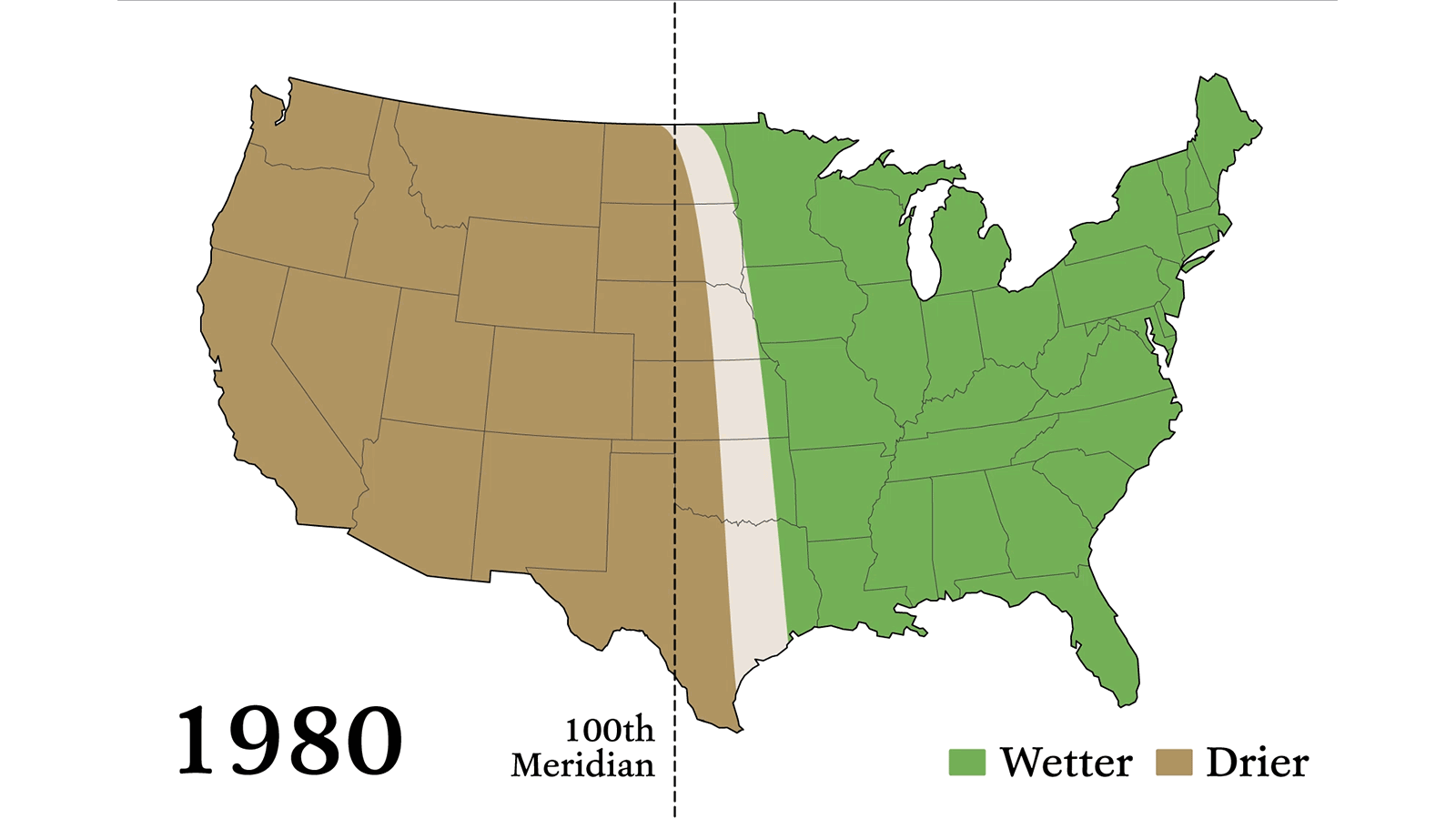Climate change works in mysterious ways; it isn’t limited to wildfires and melting ice. Today’s climate exhibit: The 100th Meridian — the famous dividing line that separates America’s wet East from the dry West — has migrated 140 miles east since 1980.
The boundary passes through North Dakota, South Dakota, Nebraska, Kansas, Oklahoma, and Texas — America’s breadbasket. Once you cross the divide, the rain-soaked grasses of the East turn into dusty plains, with the occasional cactus dotting the landscape.
“Passing from east to west across this belt a wonderful transformation is observed,” remarked John Wesley Powell, famous explorer of the West, in 1890. The conservationist was the first to mark the transition line, which became known as “100th Meridian” because it closely follows the 100th meridian of longitude (a vertical line that stretches from the North to South Poles).
But we may have to change the line’s name someday. The shift is the result of rising temperatures drying out parts of the northern plains and less rain falling further south, YaleEnvironment360 reports. This could be due to natural variability — changes caused by nonhuman forces — but the migration aligns with what researchers tell us to expect from global warming.



